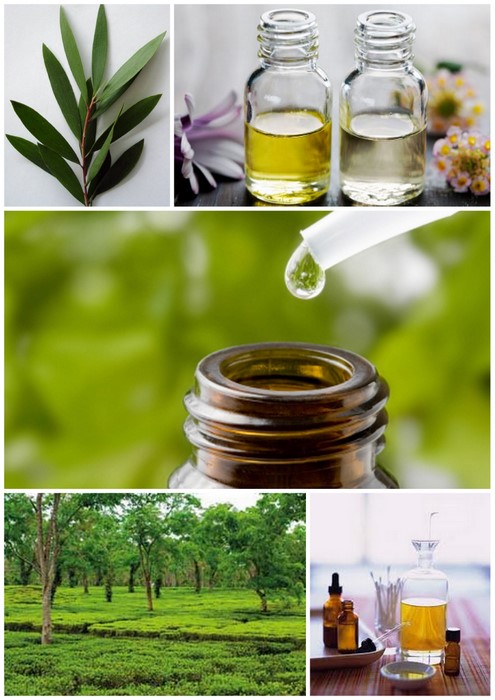 Avusturalya da yetişen çay ağacı denilen bir bitkiden elde edilir. Çay ağacı dense de ülkemizde yetişen çaydan farklı bir bitkidir.Kıtanın yerlilerinin tedavide kullandıkları bir bitki türüdür.TTO (Tea Tree Oil-çay ağacı yağı) kokulu bir yağdır. Üzerine yapılmış yüzlerce bilimsel çalışma vardır. Yapılan bilimsel çalışmalarda bölgesel olarak kullanımı halinde
Avusturalya da yetişen çay ağacı denilen bir bitkiden elde edilir. Çay ağacı dense de ülkemizde yetişen çaydan farklı bir bitkidir.Kıtanın yerlilerinin tedavide kullandıkları bir bitki türüdür.TTO (Tea Tree Oil-çay ağacı yağı) kokulu bir yağdır. Üzerine yapılmış yüzlerce bilimsel çalışma vardır. Yapılan bilimsel çalışmalarda bölgesel olarak kullanımı halinde
-Antibakteriyel (mikrop öldürücü)
-Anti mikotik (mantar öldürücü)
-Antienflamatuar (şişlik giderici)
Etkileri olduğu görülmüştür.
Karşılaştırmalı bilimsel çalışmalarda mantar kremleri kadar etkili olduğu görülmüştür.Saçla ilgili en yaygın kullanıldığı hastalık yağlı egzama (seboreik dermatittir).Yağlı egzama tedavisinde yan etkiye sebep olmadan yüksek başarı göstermektedir.% 5 lik solüsyonları haftada 2 defa kullanıldığında yağlı egzama ve buna bağlı saç dökülmesi düzelir.
Solusyon dışında merhem formu olarak ta kullanılmaktadır merhem formunda % 1 yoğunlukla kullanılır ve pişik,kaşıntı, böcek sokması, allerji ve cilt yağlı egzamalarında güvenle ve başarıyla kullanılır.
TTO Saç Mantarı Tedavisinde Kullanıldığı Bilimsel Çalışma
Tea Tree Oil (TTO-Çay ağacı yağı) mantar tedavisinde klasik mantar ilaçları kadar etkilidir,bu konuda yapılmış bir çok bilimsel çalışma vadır. Okuyacağınız bu bilimsel çalışma Almanyada yapılmış bir çalışmadır.
Antifungal Activity of the Essential Oil of Melaleuca alternifolia(Tea Tree Oil) against Pathogenic Fungi in vitro
Nenoff P.a · Haustein U.-F.a · Brandt W.b
aDepartment of Dermatology, University of Leipzig, andbDr. K. Hollborn & Söhne GmbH & Co. KG, Leipzig, Germany
Skin Pharmacol ;9:388–394 (DOI:10.1159/000211450)
Abstract
The in vitro antifungal activity of tea oil, the essential oil of Melaleuca alternifolia, has been evaluated against 26 strains of various dermatophyte species, 54 yeasts, among them 32 strains of Candida albicans and other Candida sp. as well as 22 different Malassezia furfurstrains. Minimum inhibitory concentrations (MIC) of tea tree oil were measured by agar dilution technique. Tea tree oil was found to be able to inhibit growth of all clinical fungal isolates. For the investigated dermatophytes MIC values from 1,112.5 to 4,450.0 μg/ml with a geometric mean of 1,431.5 μg/ml were demonstrated. Both C. albicans strains and the other strains belonging to the genus Candida and Trichosporon appeared to be slightly less susceptible to tea tree oil in vitro. However, their MIC values, which varied from 2,225.0 to 4,450.0 μg/ml (geometric mean 4,080 μg/ml), indicated moderate susceptibility to the essential oil of M. alternifolia. The lipophilic yeast M. furfur seemed to be most susceptible to tea tree oil. MIC values between 556.2 and 4,450.0 μg/ml (geometric mean 1,261.5 μg/ml) were found against the tested M. furfur strains. However, when calculated as percentage tea tree oil of the agar, the above-mentioned concentrations correspond to 0.5-0.44% tea tree oil content. These values are far below the usual relatively high therapeutic concentrations of the agent; approximately 5-10% solution or even the concentrated essential oil are used for external treatment. In comparison with tea tree oil, in vitro susceptibility against miconazole, an established topical antifungal, was tested. As expected, very low MIC values for miconazole were found for dermatophytes (geometric mean 0.2 μg/ml), yeasts (geometric mean 1.0 μg/ml), and M. furfur (geometric mean 2.34 μg/ml). It is suggested that the in vivo effect of tea tree oil ointment in the therapy of fungal infections of the skin and mucous membranes as well as in the treatment of dandruff, a mild form of seborrheic dermatitis, may be at least partly due to an antifungal activity of tea tree oil.
Drug Dosage / Copyright
Drug Dosage: The authors and the publisher have exerted every effort to ensure that drug selection and dosage set forth in this text are in accord with current recommendations and practice at the time of publication. However, in view of ongoing research, changes in goverment regulations, and the constant flow of information relating to drug therapy and drug reactions, the reader is urged to check the package insert for each drug for any changes in indications and dosage and for added warnings and precautions. This is particularly important when the recommended agent is a new and/or infrequently employed drug. Copyright: All rights reserved. No part of this publication may be translated into other languages, reproduced or utilized in any form or by any means, electronic or mechanical, including photocopying, recording, microcopying, or by any information storage and retrieval system, without permission in writing from the publisher or, in the case of photocopying, direct payment of a specified fee to the Copyright Clearance Center.



